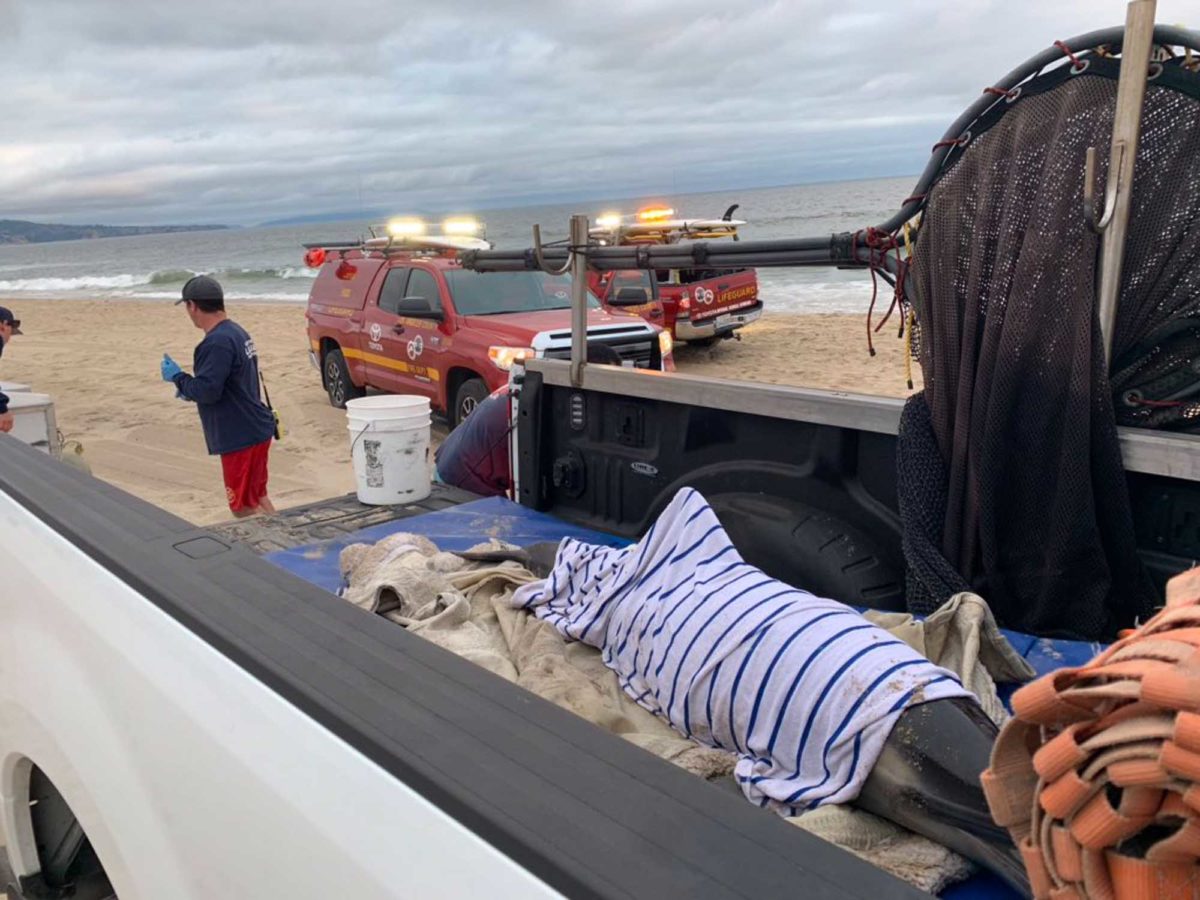Algae poisoning suspected in dolphin death

Los Angeles County Lifeguards load a sick dolphin onto a Marine Animal Rescue Truck last week. Photo courtesy L.A. County Lifeguards
Authorities say a dolphin that washed ashore in Hermosa Beach last week and later died might have been suffering from poisoning caused by eating other fish that had consumed seasonal algae.
The dolphin washed up on the sand near 29th Street about 7:30 p.m. June 20, according to the Los Angeles County Lifeguards. The lifeguards notified Marine Animal Rescue, an El Segundo nonprofit that rescues sick and injured wildlife.
At the time the animal emerged from the water, it appeared to be experiencing petit mal seizures, said Peter Wallerstein, president of the rescue group. Lifeguards loaded the animal onto a truck belonging to marine animal rescue workers, who tried to find a place that could treat the sick animal.
Rescue workers made calls looking for a place that could accept the dolphin, but were not having any luck. They drove down to the stretch of ocean near Seaside Lagoon in Redondo Beach and briefly got the dolphin back in the water, Wallerstein said. Then they got a call from a veterinarian at Fort MacArthur in San Pedro, and transported the dolphin. Staff there attempted to treat the animal, but it died about 11 p.m. that night.
Although blood tests from the animal have not yet come back, the evidence points to domoic acid toxicosis, Wallerstein said.
Domoic acid is found in algae blooms. Smaller fish, who eat the algae, are eaten by larger animals, like dolphins. Eventually, enough of the domoic acid builds up in the systems of the larger animals that it produces a reaction.
Last week, a 13-year-old girl swimming at Pismo Beach in Central California was bitten by a sea lion believed to be suffering from domoic acid poisoning. Sea lion attacks on humans are extremely rare, and the girl, who was hospitalized, appeared on “Good Morning America” to relate the ordeal.
“All of a sudden, it came out of nowhere and bit my leg,” the girl told ABC.
Toxic exposure to domoic acid can cause what looks like bizarre behavior, and can ultimately lead to death. It is more common in the summer months, when algae blooms expand, Wallerstein said. It can affect whales and pelicans along with dolphins and sea lions, and can build up in shellfish to make them poisonous to humans.
“That’s what happens when they have a neurotoxin exploding in their brain. Some will react extra viciously. We’ve had lifeguards being chased into their trucks by sea lions,” Wallerstein said.

